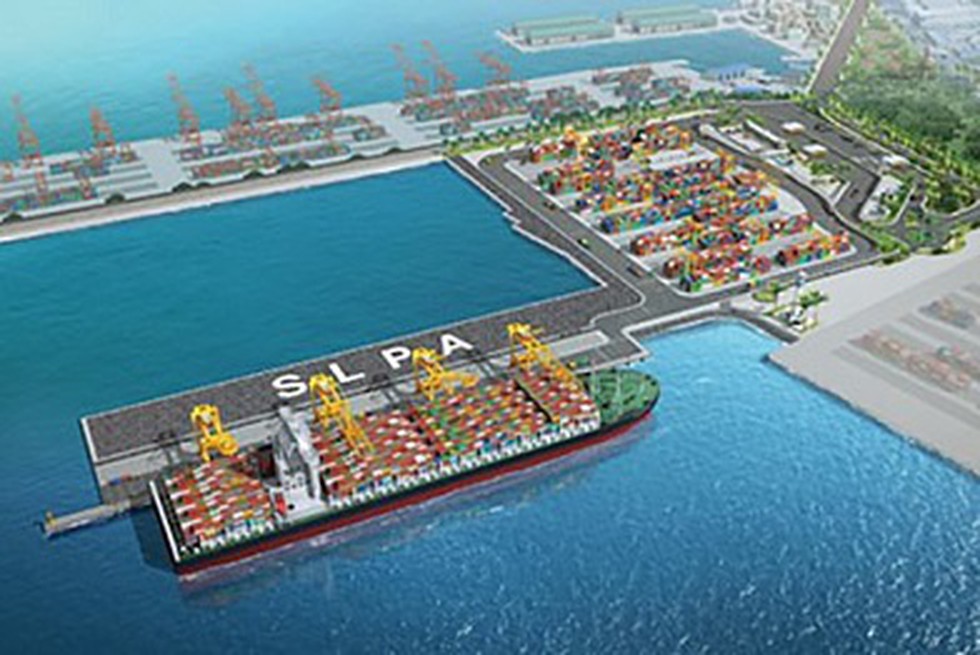
US-Adani deal for Sri Lanka port heats up race with China
NEW DELHI : The US International Development Finance Corporation’s (DFC) announcement of a $553 million investment in the West Container Terminal of Colombo port was not unexpected.The said port is being built by a joint venture between Adani Ports, local partner John Keells Holdings PLC, and the Sri Lanka Port Authority.
The deal has attracted attention because it makes even more visible the intense race between the US and China to build infrastructure in the Indian Ocean. It has drawn in island nations such as Sri Lanka, showing how badly battered they can get in the process, and also countries like India with its private-sector wildcard, the Adani Group.
The business case for investing in any of the arms of the Colombo port was never in doubt. Operations at the six terminals ringing each side of the port were not affected even at the height of Sri Lanka’s recent economic distress. A key reason for this is their earnings are ring-fenced as foreign-exchange income. The eastern arm of the transhipment port was developed first, as shipping companies found the island conveniently located on the international route across the Indian Ocean. That allure has deepened, with 40% of global maritime trade now using this ocean. Colombo further cemented its position as the sole deep-draught port abutting India. The emergence of Bangladesh as an export hub has made the port even more sought-after, though its combined capacity is much smaller than that of Singapore or Port Klang in Malaysia.
India is several years away from having a transhipment port of its own (the nearest to this being Vizinjam in Kerala), or even a port with a deep draught of above 18 meters to take in large container ships. This is despite the suggestions of the Rakesh Mohan transport committee report of 2013, which called for developing two transhipment ports on both coasts on priority. Colombo, therefore, is in a sweet spot to service India’s export-import trade, enjoying a near monopoly on account of its prime location.
These factors were also the reasons why China came calling to Sri Lanka at Hambantota, its second-largest port. The privatisation deal with a non-transparently signed 99-year lease went awry, leaving the Sri Lankan government with a huge debt load. Now chastened, Sri Lanka is amenable to investments like the DFC’s. This is also privatisation, but with transparent terms. Adani Ports has had a 51% stake in the West Container Terminal since March 2021.
The US has now clearly joined another race against China – to acquire ports in Asia.
The deal could even be called the first cut of the India Middle East Europe Corridor deal to counter the challenge of China’s Belt and Road Initiative. Remember, the investment will help a company whose other leg is planted at Haifa port in Israel. Expect more countries and companies to be deeply involved in similar deals in the Indo-Pacific region.
For the Adani Group, of course, this is good news. While Adani Ports, the most liquid of the group’s assets, was affected the least by Hindenburg Research’s short-selling report in January, it did suffer collateral damage, especially with its auditor Deloitte quitting in August.
Port operations need a consistent flow of money, and given the cumulative impact of controversies around the group, the cost of money to invest in projects was rising. The group plans to invest up to ₹20,000 crore (about $3.5 billion) to expand its cargo capacity at ports, excluding the $1.2 billion it has spent to acquire a stake at Haifa. Since last year there had been reports of worries in Sri Lanka over whether the Adani investment was a “sweetheart” deal. The investment by DFC has bolstered the financial case for the deal.
The global race for infrastructure assets has clearly begun to define friends and foes.

